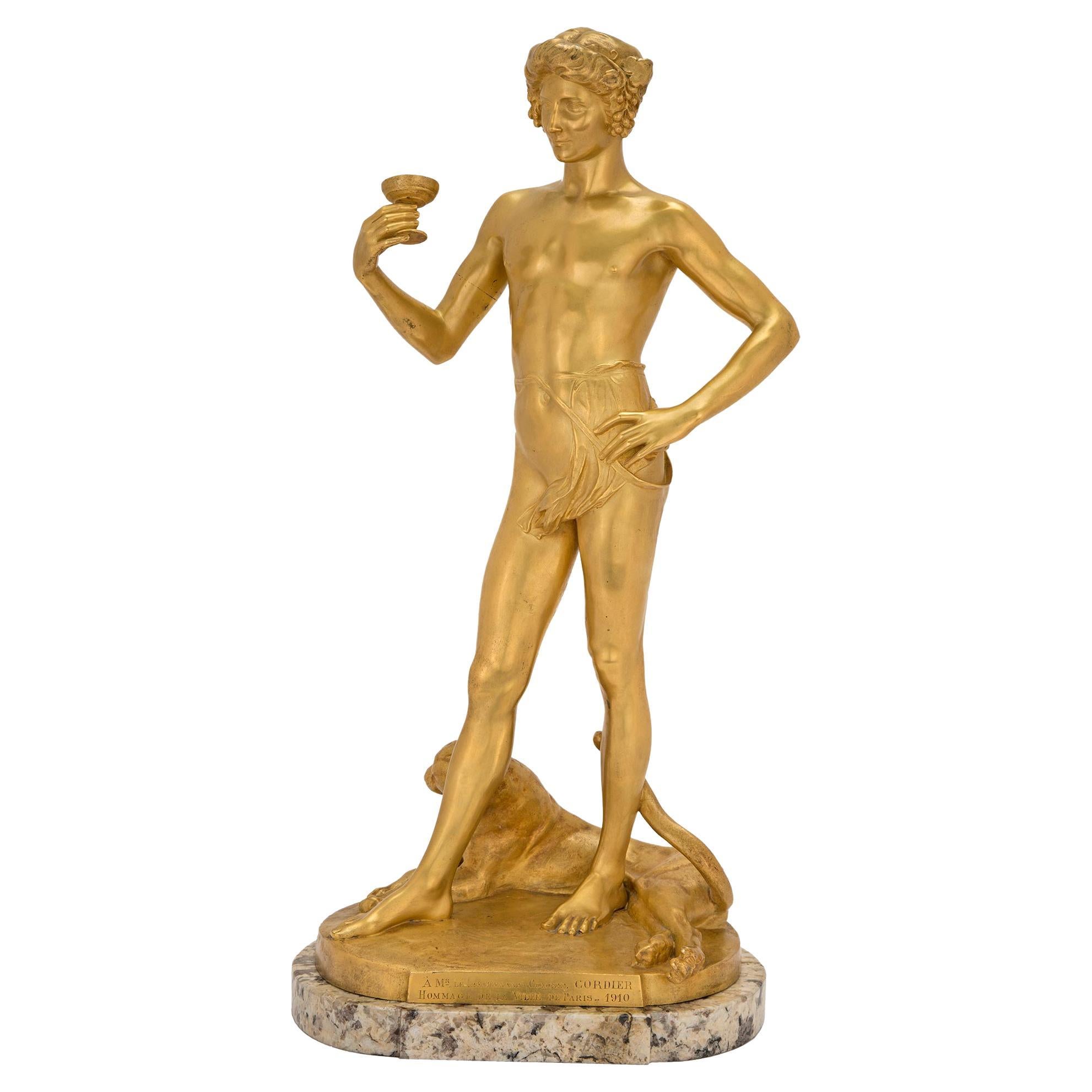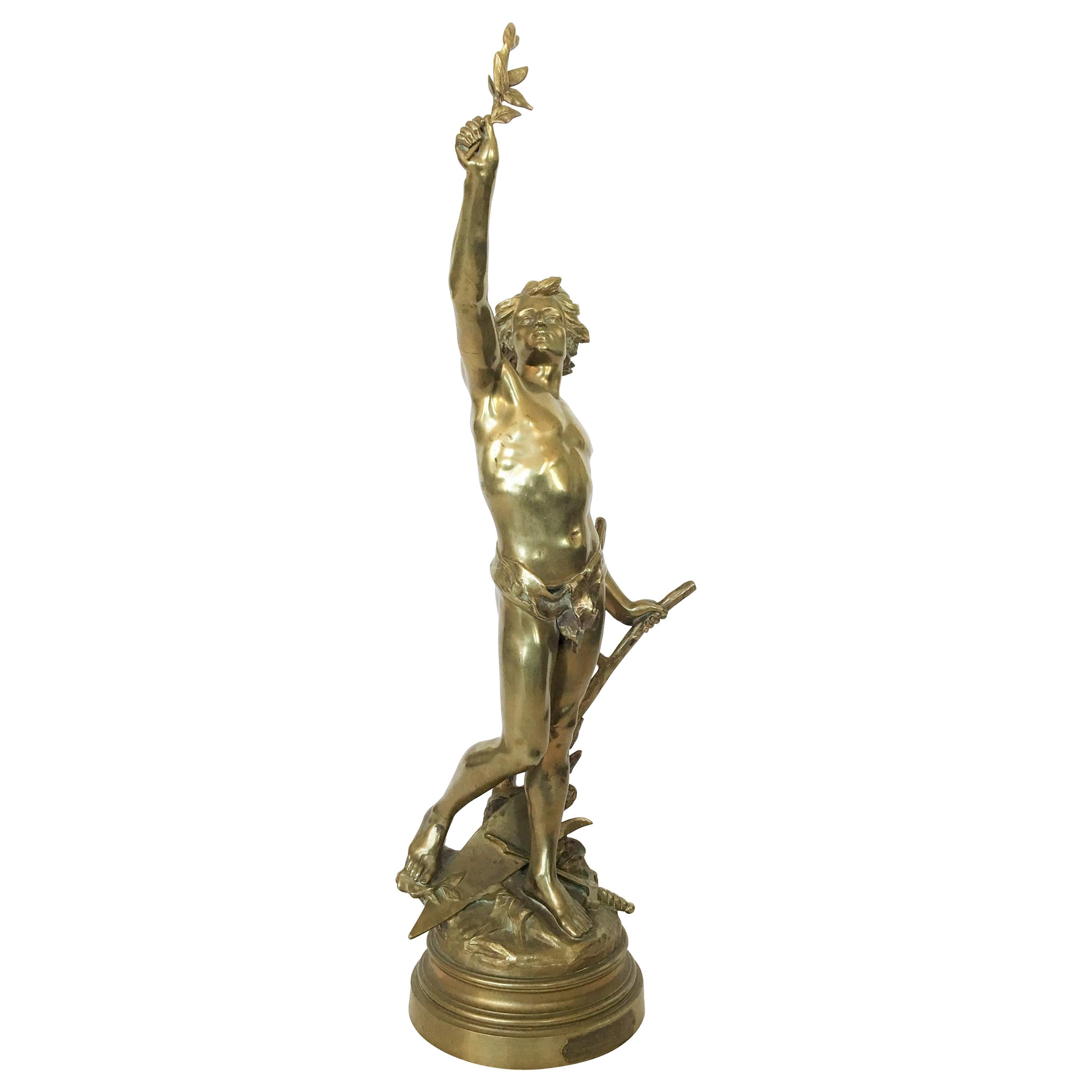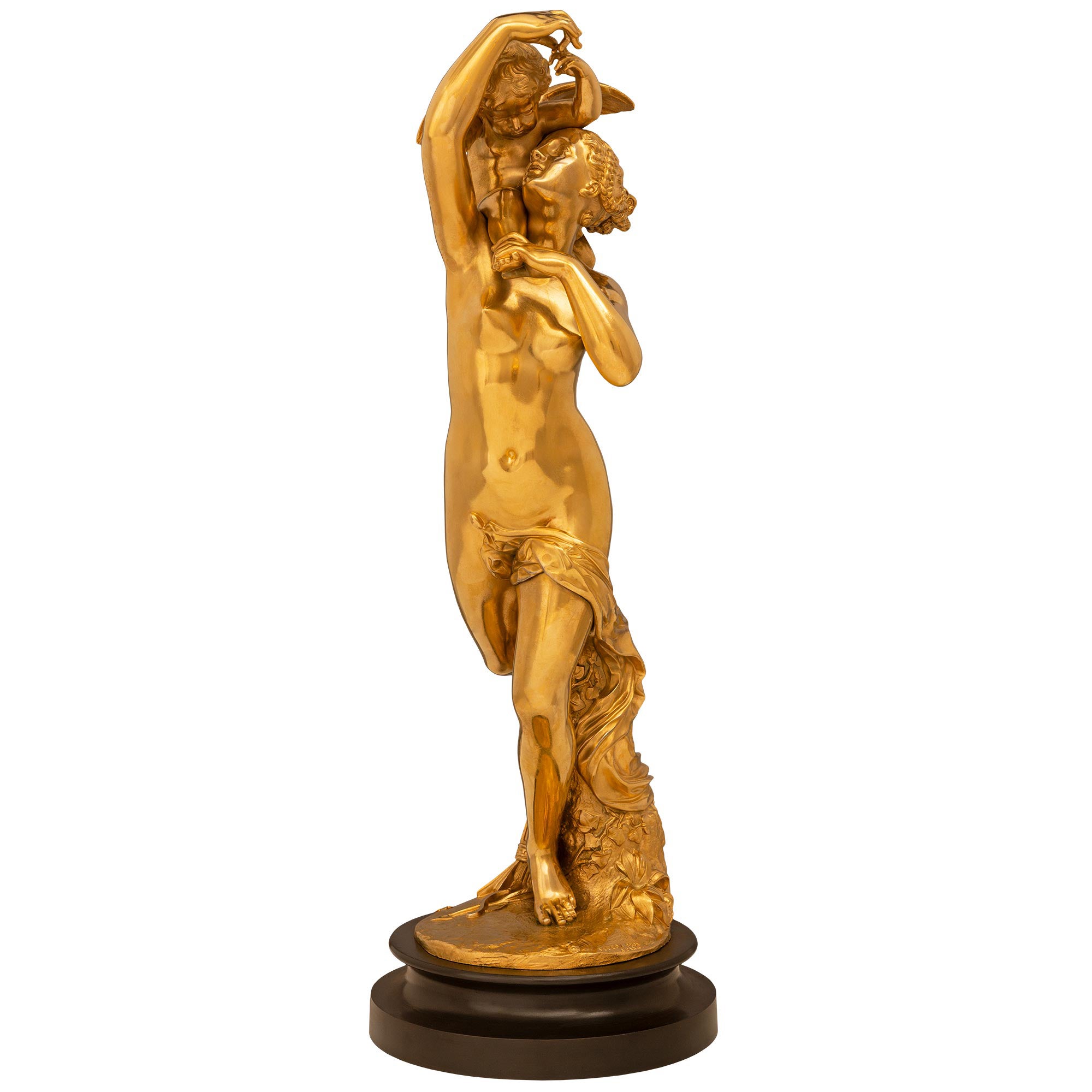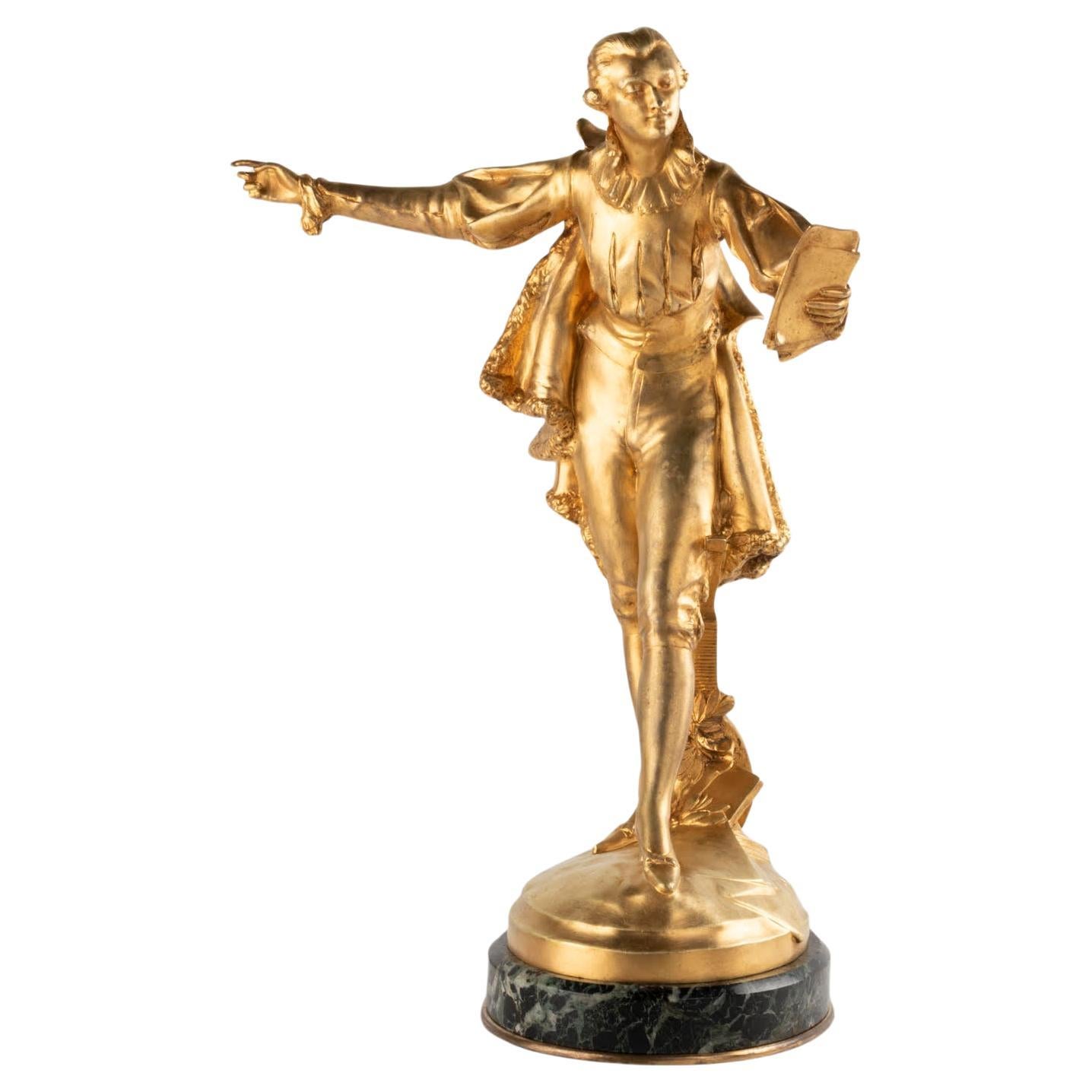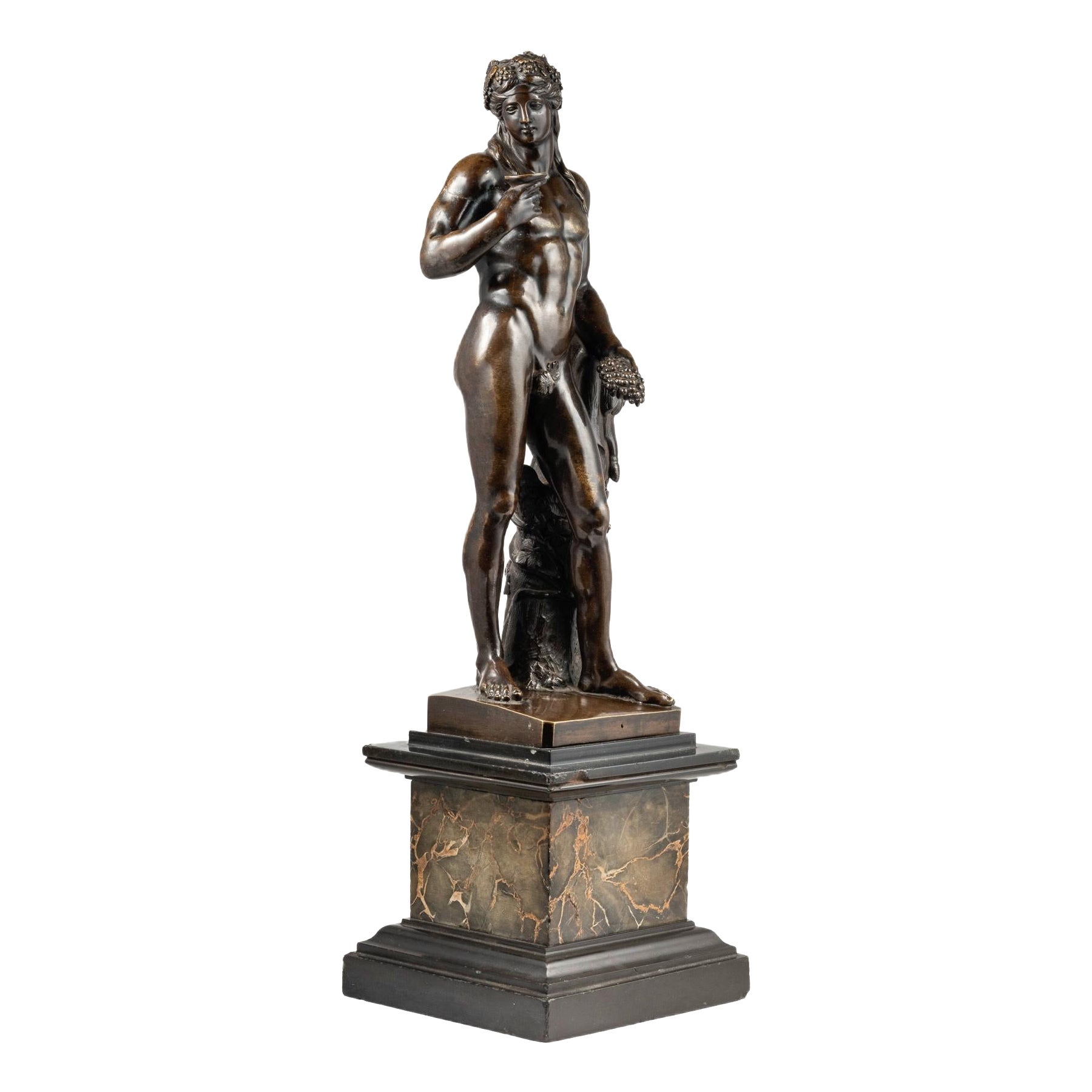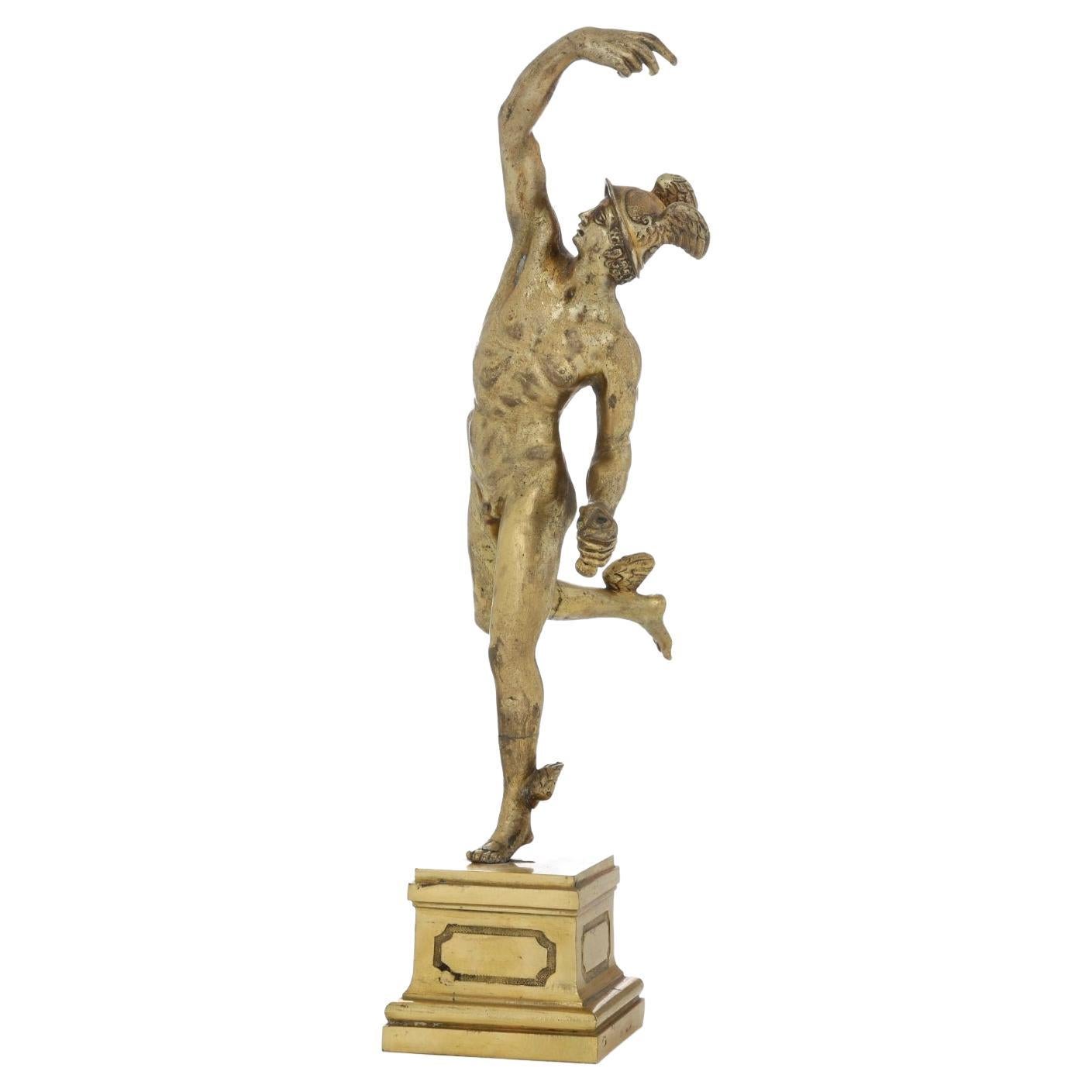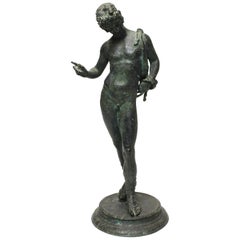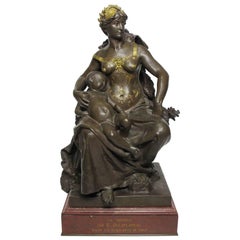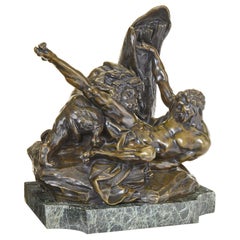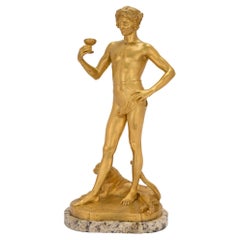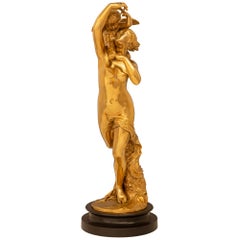Items Similar to Cipri Adolf Bermann, German, 19th Century Gilt-Bronze Bacchus Herm Term
Video Loading
Want more images or videos?
Request additional images or videos from the seller
1 of 14
Cipri Adolf Bermann, German, 19th Century Gilt-Bronze Bacchus Herm Term
$3,250
$4,95034% Off
£2,450.82
£3,732.7934% Off
€2,834.49
€4,317.1534% Off
CA$4,559.73
CA$6,944.8234% Off
A$5,068.43
A$7,719.6034% Off
CHF 2,656.76
CHF 4,046.4534% Off
MX$61,897.75
MX$94,275.0334% Off
NOK 33,168.12
NOK 50,517.6034% Off
SEK 31,205.01
SEK 47,527.6434% Off
DKK 21,155.84
DKK 32,221.9734% Off
About the Item
Cipri Adolf Bermann (German, 1862-1942) a very fine 19th century gilt-bronze miniature figure of a Bacchus Herm, depicting Bacchus, also known as Dionysus, the god of the grape harvest, wine making and wine in Greek Mythology, raised on a black marble plinth. Signed: C.A. Bermann, circa 1890.
Measures: Overall height 16 inches (40.7 cm)
Bronze height 12 1/8 inches (30.8 cm)
Base 5 inches by 5 inches (12.7 cm x 12.7 cm).
- Creator:Cipri Adolf Bermann (Sculptor)
- Dimensions:Height: 16 in (40.64 cm)Width: 5 in (12.7 cm)Depth: 5 in (12.7 cm)
- Style:Louis XV (In the Style Of)
- Materials and Techniques:
- Place of Origin:
- Period:1900-1909
- Date of Manufacture:circa 1890
- Condition:Wear consistent with age and use. Minor fading. A beautiful sculpture of bacchus or satyr. Great for a desk decoration.
- Seller Location:Los Angeles, CA
- Reference Number:Seller: Ref.: A20421stDibs: LU1796211449441
About the Seller
5.0
Vetted Professional Seller
Every seller passes strict standards for authenticity and reliability
Established in 1982
1stDibs seller since 2016
135 sales on 1stDibs
Typical response time: 1 hour
- ShippingRetrieving quote...Shipping from: Los Angeles, CA
- Return Policy
Authenticity Guarantee
In the unlikely event there’s an issue with an item’s authenticity, contact us within 1 year for a full refund. DetailsMoney-Back Guarantee
If your item is not as described, is damaged in transit, or does not arrive, contact us within 7 days for a full refund. Details24-Hour Cancellation
You have a 24-hour grace period in which to reconsider your purchase, with no questions asked.Vetted Professional Sellers
Our world-class sellers must adhere to strict standards for service and quality, maintaining the integrity of our listings.Price-Match Guarantee
If you find that a seller listed the same item for a lower price elsewhere, we’ll match it.Trusted Global Delivery
Our best-in-class carrier network provides specialized shipping options worldwide, including custom delivery.More From This Seller
View AllItalian 19th Century Grand Tour Bronze Sculpture of Narcissus, after Pompeii
Located in Los Angeles, CA
An Italian 19th century grand tour - Greco Roman bronze sculpture of Narcissus, after the original sculpture excavated in 1862 at Pompeii. The green...
Category
Antique 19th Century Italian Greco Roman Figurative Sculptures
Materials
Bronze
$1,985 Sale Price
42% Off
A French 19th Century Bronze Sculpture Titled "La Sécurité" Eugène Delaplanche
By Eugène Delaplanche
Located in Los Angeles, CA
A very fine French 19th century brown and parcel-gilt patinated bronze sculpture titled "La Sécurité" (The Security - Protection) after a model by Eugène Delaplanche (French, 1836–1891). Depicting a sitting young Maiden in a gilt-decorated armored suit and helmet, a lion skin on her back, holding a resting child on her arm. Raised on Rouge-Royal marble plinth inscribed "La Sécurité - Par E. Delaplanche - Salon des Beaux-Arts de Paris". Signed: E. Delaplanche and stamped with the importer's seal - Alberto Vignes y Ca - Buenos Aires, circa 1890.
Measures: Height: 28 3/4 inches (60.3 cm).
Width: 16 inches (40.7 cm).
Depth: 14 inches (35.6 cm).
Eugène Delaplanche (February 28, 1836 – January 10, 1891) was a French sculptor, born at Belleville (Seine).
He was a pupil of Duret, gained the Prix de Rome in 1864 (spending 1864-67 at the Villa Medici in Rome) and the medal of honor in 1878. His "Messenger of Love" (1874), "Aurora" (1878), and the "Virgin of the Lillies" (1884), are in the Luxembourg. Other works by him are "Music - La Musique" (1878, Paris Opera House), called his masterpiece; "Eve After the Fall" (1869); "Maternal Instruction" (1875, Square of Sainte-Clothilde, Paris). He is also noted for his decorations in relief on vases of Haviland faience. His best work is naturalistic, but at the same time dignified and simple in line and shows sound mastery of technique. He is represented by 15 works in the Glyptothek, Copenhagen and in many other French museums and in churches.
This sculpture of La Sécurité is after his 1884 sculptures...
Category
Antique Late 19th Century French Belle Époque Figurative Sculptures
Materials
Marble, Bronze
$18,450 Sale Price
47% Off
Fine French 19th Century Bronze Figure of "Milo of Croton & Lion" After Falconet
By Étienne Maurice Falconet
Located in Los Angeles, CA
A very fine French 19th century Patinated bronze Figure of "Milo of Croton and the Lion" after the marble sculpture of Milon de Crotone by renown French...
Category
Antique 19th Century French Baroque Figurative Sculptures
Materials
Marble, Bronze
$12,450 Sale Price
32% Off
French 19th/20th Century Bronze of a Fairy “Lutin des Bois”, After Luca Madrassi
By Luca Madrassi
Located in Los Angeles, CA
A Fine French 19th/20th Century Patinated Bronze Figure titled “Lutin des Bois” (Woodland Fairy or Elf) after Luca Madrassi (Italian, 1869-1914). The beautifully executed slender fig...
Category
Antique Early 1900s French Belle Époque Figurative Sculptures
Materials
Bronze
$12,450 Sale Price
32% Off
After Gaston Leroux French 19th Century Bronze Sculpture of Rebecca
By Gaston Veuvenot Leroux
Located in Los Angeles, CA
A fine French 19th-20th century orientalist silvered and gilt patinated bronze sculpture of "Rebecca" with a plaque that reads "Jeune Fille Arabe" (A Young Arab Girl - Water-Carrier)...
Category
Antique Early 1900s French Greco Roman Figurative Sculptures
Materials
Bronze
$6,985 Sale Price
26% Off
French 19th Century Life-Size Bronze "La Danse des Oeufs" by Gustave-Louis Nast
By Gustave-Louis Nast 1
Located in Los Angeles, CA
A fine and large French 19th century Orientalist style life-size patinated and parcel-gilt bronze sculpture of "La Danse des Oeufs" (The Dance of Golden Eggs) also known as "La Danse...
Category
Antique Late 19th Century French Aesthetic Movement Figurative Sculptures
Materials
Marble, Brass, Bronze
$36,950 Sale Price
43% Off
You May Also Like
French Neo-Classical St. Ormolu Statue Signed Jean Antonin Carlès
By Jean Antonin Carles
Located in West Palm Beach, FL
A handsome and high quality French Turn of the Century Neo-Classical st. Ormolu and Onyx statue of Aquarius, signed Antonin Carlès, Paris 1903. This handsome statue is raised on an oval Onyx base which follows the contours of the Ormolu statue...
Category
20th Century French Neoclassical Figurative Sculptures
Materials
Ormolu
19th Century Edouard Drouot Patinated and Gilt Bronze "Pax labor"
By Edouard Drouot
Located in Dallas, TX
Patinated and gilt bronze sculpture "Pax Labor" by Edouard Drouot (French, 1859-1945). Having a gilt finish bronze sculpture depicting a young man who is holding an olive branch and ...
Category
Antique 19th Century French Figurative Sculptures
Materials
Bronze
French 19th Century Bronze & Ormolu Statue Allegorie De L'amour Maternel
Located in West Palm Beach, FL
A wonderful and finely detailed French 19th century Ormolu and Patinated Bronze statue titled Allegorie de L'amour Maternel, signed Fraikin and Vittoz. The stunning statue's title me...
Category
Antique 19th Century French Figurative Sculptures
Materials
Bronze, Ormolu
Sculpture in Gilt Bronze and Marble Base by Paul Ducuing, 19th Century.
By Paul Ducuing
Located in Saint-Ouen, FR
Sculpture in gilt bronze and marble base by Paul Ducuing, 19th century.
Sculpture by Paul Ducuing, foundry F.Barbedienne Paris, in gilt bronze and marble...
Category
Antique 19th Century French Napoleon III Figurative Sculptures
Materials
Marble, Bronze
18/19th C. Italian Neoclassical Patinated Bronze Sculpture of Bacchus
Located in New York, NY
A Rare and Exquisite Late 18th to Early 19th Century Italian Neoclassical Patinated Bronze Sculpture of Bacchus, God of Wine, Fertility, and Revelry.
This superbly cast and finely m...
Category
Antique 1790s Italian Neoclassical Figurative Sculptures
Materials
Marble, Bronze
A Italian Gilt Bronze Hermes 19th Century
Located in Madrid, ES
A Italian Gilt Bronze Hermes 19th Century
H: 30cm
very good condition.
Category
Antique Early 19th Century European Baroque Figurative Sculptures
Materials
Bronze
$1,145 Sale Price
20% Off
More Ways To Browse
Black Marble Plinth
Bronze Bacchus
Bacchus Sculpture
Bacchus God Of Wine
Bacchus Marble
Bronze Sculpture Bacchus
Gilt Bronze Miniatures
Dionysus Sculpture
Marble Sculpture Grape
Dionysus Bronze
French Furniture Stamped Signed
Vintage Siam
Antique Polychromed Wood
Seal Sculpture
Black Metal Sculptures
Polished Sculpture Bronze
1920 Marble Furniture
French Neoclassical Art
